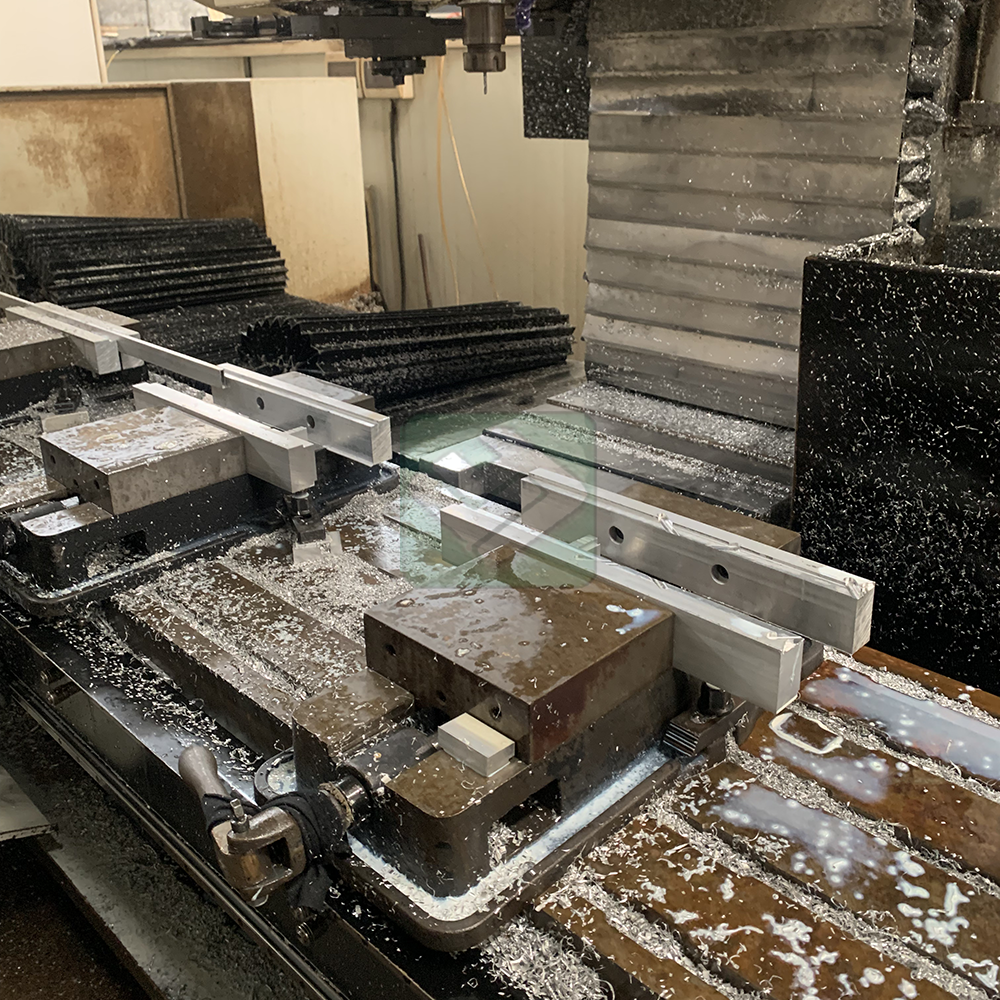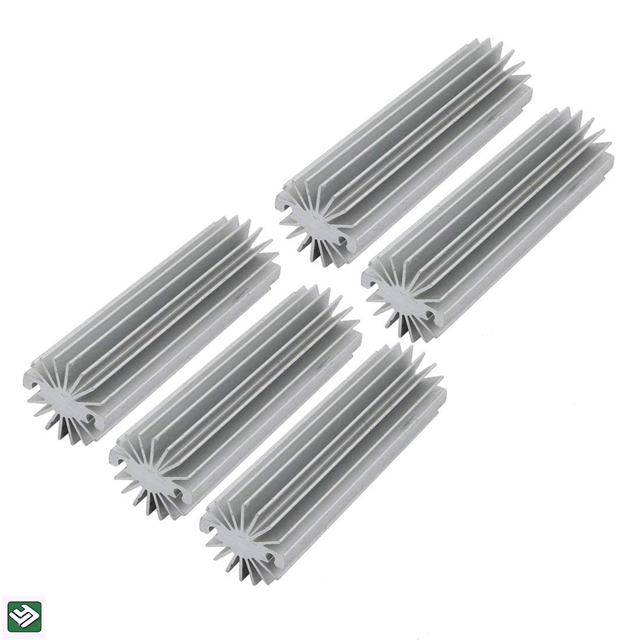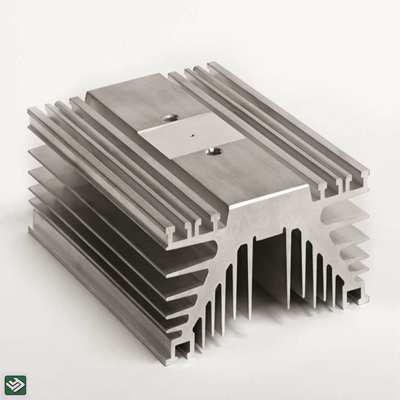Extruded Anodized Aluminum HeatSink
Product Detail
An extruded anodized aluminum heatsink is a widely used solution for thermal management in electronics and mechanical systems. These heatsinks are known for their high thermal conductivity, lightweight, and corrosion-resistant properties, making them ideal for dissipating heat from electronic components like CPUs, LEDs, power transistors, and other heat-generating devices.We can custom all kinds of the aluminum heatsink as your request,choose liangyin,choose the quality.
Shipping: Express/ Sea transportation
Category: Aluminum Heatsink
What It's For Info
Product Name | Heat Sink |
Brand | Liangyin |
Application | Inverters, controllers,LED,Telecommunication, wind power converters, and SVG etc. |
Material & Temper | Aluminum Alloy 6063-T5,6061-T6 |
Deep Processing | CNC / Cutting / Punching / Checking / Tapping / Drilling / Milling /Communication Device etc. |
Surface Treatment | Degreasing,Anodizing,Sand Blasting,Painting,Powder coating Chromating and,Laser marking |
Material & Temper | Aluminum Alloy 6063-T5,6061-T6 |
Size | According to customer's drawing or sample |
Key Ingredients
- 1. Aluminum Alloy
Material: The base material for these heatsinks is typically aluminum, specifically high-grade alloys like 6061 or 6063. These alloys offer an excellent balance of thermal conductivity, strength, and formability.
Aluminum 6061: Known for its high strength and good corrosion resistance. Suitable for applications where mechanical strength is important.
Aluminum 6063: More commonly used in heatsinks due to its excellent formability and surface finish, as well as sufficient strength and thermal properties.
- 2. Extrusion Process
Die (Mold): The aluminum is forced through a custom-shaped die, which gives the heatsink its form (fins, base, etc.).
Profile Design: The design of the extrusion die defines the fin shape, thickness, and spacing, which directly impact the heat dissipation performance.
- 3. Anodizing Solution
Electrolyte: A sulfuric acid-based solution is typically used for anodizing. The aluminum is submerged in this electrolyte to enhance the oxide layer on the surface.
Electric Current: The application of electrical current oxidizes the surface, forming a layer of aluminum oxide that increases durability, thermal emissivity, and corrosion resistance.
- 4. Fin Geometry
Fin Height and Spacing: The number, height, and spacing of the fins are key elements that determine the efficiency of heat dissipation by increasing surface area and optimizing airflow.
Base Thickness: The base of the heatsink must be designed to balance heat spread and structural integrity. If too thin, it may not conduct heat well enough; if too thick, it adds unnecessary weight.
- 5. Anodized Finish
Surface Treatment: The heatsink is anodized to improve surface properties. Black anodizing is often preferred because it enhances thermal emissivity, helping to radiate heat more effectively.
Protective Layer: The anodized layer protects the aluminum from corrosion, abrasion, and oxidation while also providing electrical insulation.
- 6. Thermal Interface Material (Optional)
Thermal Paste or Pad: To ensure optimal thermal transfer between the heatsink and the component (such as a CPU or LED), a thermal interface material (TIM) like thermal paste or thermal pads is often applied. This fills the microscopic gaps between surfaces to enhance heat conduction.
|
SHAPE |
Square, round, shaped, rectangular, customized |
|
SURFACE TREATMENT |
Mill finish, anodized, powder coating, fluorine carbon spraying, and so on |
|
COLORS |
Silver, black, blue, wood color, RAL powder coating color and so on |
|
PACKING DETAILES |
Inside: packed with plastic protective film/cotton to protect each pieceOutside: wrap to be bundles by waterproof craft paper |
|
DELIVERY TIME |
Mass production completed: 20-30 days after sample is confirmed by client |
|
FOB PORT |
Foshan/Shenzhen/Guangzhou |
|
PAYMENT TERMS |
T/T 30% for deposit, balance before shipping |
|
PRODUCTION CAPACITY |
5000 tons monthly, 60000 tons yearly |
|
CERTIFICATES |
SGS, CE, ISO, QUOLANOD AVAILABLE |






Application
1. Consumer Electronics
CPUs and GPUs: Heatsinks are essential in cooling processors in computers and gaming consoles, preventing them from overheating and ensuring consistent performance.
Power Supplies: Used in desktop power supplies and other electrical equipment to dissipate the heat generated by voltage regulation components.
Laptops and Smartphones: Thin profile heatsinks help manage heat in compact devices like laptops and high-end smartphones.
2. LED Lighting
High-Power LED Arrays: LEDs generate significant heat, and without proper heat management, their lifespan and efficiency are reduced. Heatsinks in LED lighting fixtures dissipate heat, improving the longevity and performance of the LEDs.
Streetlights, Automotive, and Industrial Lighting: In large-scale or high-power LED applications, extruded heatsinks are crucial for preventing thermal overload.
3. Telecommunications Equipment
Routers and Modems: Heatsinks help cool the processors and power components within networking devices such as routers, modems, and switches, ensuring stable data transmission and preventing failures due to overheating.
Base Stations: Heatsinks are used in telecom base stations to manage heat in high-power radio transmission and communication systems.
4. Automotive Industry
Electric Vehicle (EV) Power Electronics: Heatsinks are used to cool critical components like motor controllers, inverters, and onboard chargers in electric vehicles. Efficient thermal management is vital for the reliability and safety of EVs.
LED Headlights and Displays: With the shift towards LEDs in car lighting systems, heatsinks are integrated to prevent thermal degradation of LED lights.
Battery Management Systems (BMS): In electric and hybrid vehicles, heatsinks help control the temperature of battery packs, enhancing the lifespan and performance of the battery.
5. Industrial Equipment
Power Supplies and Motor Drives: Heatsinks are used in industrial-grade power supplies, inverters, and motor controllers to manage the heat generated during high-power operations.
Automation Equipment: In automation systems, heatsinks keep industrial processors, sensors, and controllers cool, enabling continuous operation in factory settings.
6. Renewable Energy Systems
Solar Inverters: In solar power systems, heatsinks are used to dissipate heat in inverters, which convert DC power from solar panels to AC power used in the grid or homes.
Wind Turbine Electronics: In wind turbines, heatsinks are essential for cooling power electronics and ensuring the consistent operation of electrical components in challenging environments.
7. Medical Devices
Imaging Systems: Heatsinks in medical imaging devices such as MRI scanners, CT scanners, and ultrasound equipment help regulate the temperature of the electronics, ensuring accurate imaging and device reliability.
Laboratory Equipment: In laboratory settings, many devices like centrifuges, PCR machines, and incubators rely on heatsinks for stable temperature control of their electronic components.
8. Audio and Amplification Systems
Amplifiers: High-power audio amplifiers, particularly in professional audio equipment and home theater systems, generate significant heat. Heatsinks prevent thermal overload and protect the circuits from damage.
Speaker Systems: Large speaker systems, especially those used in concerts and public address systems, often incorporate heatsinks to cool power handling components and ensure consistent sound quality.
9. Aerospace and Defense
Avionics: In aerospace systems, lightweight extruded anodized aluminum heatsinks are used to cool avionics equipment (flight control systems, radar systems, and communication devices) in aircraft and spacecraft.
Military Electronics: Heatsinks are used in ruggedized electronics designed for military applications, where efficient heat dissipation is critical for operation in harsh environments.
GRADE | 6063 | 6061 | 6463 | 3003 |
STANDARD | GB/T 3190-1996 | |||
Al | Remain | Remain | Remain | Remain |
Si | 0.2-0.6 | 0.4-0.8 | 0.2-0.6 | <=0.6 |
Cu | <=0.1 | 0.15-0.4 | <=0.2 | 0.05-0.2 |
Mg | 0.45-0.9 | 0.8-1.2 | 0.45-0.9 | / |
Zn | <=0.1 | <=0.25 | <=0.05 | <=0.1 |
Mn | <=0.1 | <=0.15 | <=0.05 | 1.0-1.5 |
Ti | <=0.1 | <=0.15 | / | / |
V | / | / | / | / |
Fe | <=0.35 | <=0.7 | <=0.15 | <=0.7 |
Cr | <=0.1 | 0.04-0.35 | / | / |
SINGLE | 0.05 | / | 0.05 | 0.05 |
TOTAL | 0.15 | / | 0.15 | 0.15 |

